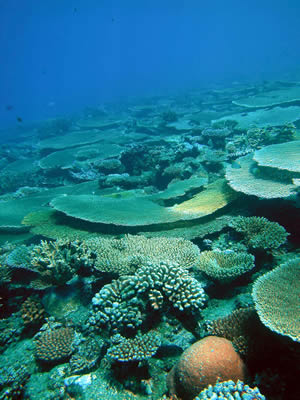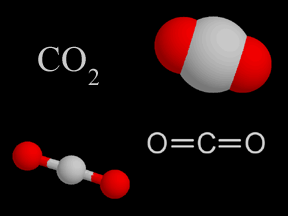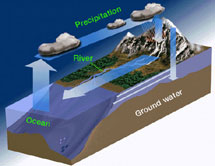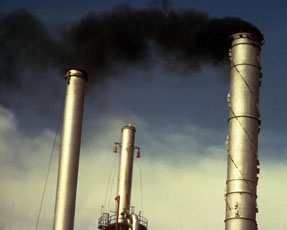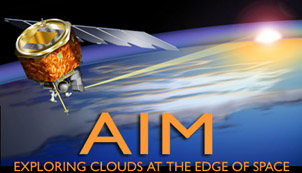Coral Reefs in Acidic Waters
Increasing amounts of carbon dioxide are released into the atmosphere from burning of fossil fuels. Some of that carbon dioxide makes its way into the world’s oceans. This changes the chemistry of seawater, lowering its pH, making it more acidic, which could have a large impact on marine life in the future.
Marine creatures such as corals, clams, snails, and many types of algae and plankton build their skeletons and shells from calcium carbonate. These creatures get the chemical building blocks they need to form the calcium carbonate mineral of their skeletons from seawater. Some, like algae, passively collect these ingredients from the seawater. Others have a more deliberate mechanism for getting the calcium ions and carbonate ions they need from the seawater. As seawater gets more acidic with more carbon dioxide dissolved in it, these creatures might have a harder time making their skeletons and shells.
Calcium carbonate mineral dissolves in acid. Try it out for yourself. Put a clam shell (one that you don’t want to keep) into a container of vinegar and wait. While a pH of 7 is neutral, vinegar has a pH of 3 so it is an acid. Within a few hours its surface will become pitted with tiny dimples that you can see with a magnifying glass. Over a day or two you will notice that your clam shell is disappearing. The calcium carbonate that makes up the shell dissolves into the acidic vinegar.
Seawater's pH is not dropping as low as vinegar. The pH of seawater varies between 7 and 8, so it is a little more basic than neutral. Since the start of the Industrial Revolution, pH of seawater has dropped about 0.1. In the next century it is expected to drop another 0.1-0.35. But scientists suspect that even these small changes can make a big difference.
How will more acidic ocean water affect marine life? Will clams and other marine life be able to grow their skeletons at the rates that they do now?
“We are only beginning to understand the complex interactions between large-scale chemistry changes and marine ecology,” said Joanie Kleypas, scientist at the National Center for Atmospheric Research in Boulder, Co. This is an area of active research.
Because reef corals build massive structures from calcium carbonate, and because those structures become a home to diverse communities of marine life, the impact of increasing acidification on corals is of particular interest to many scientists.
“This threat is hitting coral reefs at the same time that they are being hit by warming-induced mass bleaching events,” said Chris Langdon, a University of Miami scientist. Coral reefs are currently responding to many other threats such as warmer water, overfishing, and coral diseases, so the effects might be worse.
The current research indicated that for a doubling of the partial pressure of carbon dioxide (pCO2), rates of calcification decreased in corals an average of 30%. The rate is affected by many other factors besides the concentration of CO2 dissolved in the water. The temperature, light, and nutrients all affect calcification rates too.
Lower rates of calcification will likely impact marine food webs, possibly changing the biodiversity of the ocean.


